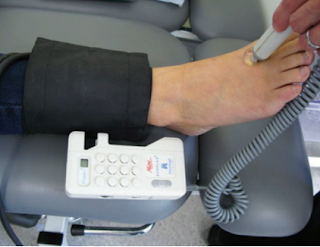Definition:
Fat emboli:
- a complication of trauma/ surgery that involve intrumentation of femoral intramedullary canal
- it is a response/ manisfestation of fat globules that may enter the blood stream
Fat embolism:
- a process by which fat emboli passes the bloodstream and lodges within the blood vessel
Fat embolism syndrome:
- serious manisfestation of fat embolism that causes multi system dysfunction
Causes:
1. mechanical theory
- fat droplets from bone marrow enters the vessel
- increase of intramedullary pressure and cause fat/marrow to enter the bloodstream. which later could lodge in the lungs as emboli
- causes inflammation and local ischemia
2. metabolic theory
- stress from trauma that causes change to the chylomicron that causes formation of fat emboli
or
1. trauma related
- fracture at long bones: especially femur fractures
2. non trauma related
- liver disease, shock, bone tumor lysis
Symptoms:
Gurd's criteria: 2major 1 minor or 1major 4 minor
- Major:
- hypoxemia, petechial rashes, neurological symptoms, pulmonary edema
- Minor:
-tachycardia, fever, retinal changes/ renal changes/ fat macroglobinemia, jaundice,
- drop in Hb, increase ESR, thrombocytopenia
Investigation:
- FBC
- ABG
- RP/LFT
- CXR : ground glass appearance / snow storm appearance
Management:
- stabilise the patient
- Airway : no obstruction
- Breathing: oxygen support
- Circulation: two large branulla with fluid support
- hemodynamically: Hb? any blood loss
- hydration: 3L/d
1. monitor vital signs : BP, PR, SPO2, temperature
2. inform
- MO incharge, anaest (ventilator support)
- keep in view the need of doing CT brain to exclude other causes
3. rigid fixation of fracture within 24 hours
4. diagnosis of exclusion
5. DVT prophylaxis
6. stress ulcer prophylaxis
Reference:
1. https://www.orthobullets.com/basic-science/9055/fat-embolism-syndrome









